The former Fiat factory building, Lingotto, is named after the district in Turin where it was built in 1923. Designed by architect Giacomo Mattè-Trucco, it was not only the largest car factory of the time but also a ground-breaking design. Le Corbusier, a pioneer of modern architecture, described it as ‘one of the most impressive sights in industry’. Inspired by the Ford assembly lines, it was constructed over five floors, with raw materials entering at ground level and emerging on to the rooftop test track as fully finished cars. More than 80 different models of Fiat were produced there before it closed in 1982.

Once the factory closed, there was much debate over the fate of this iconic building, so a competition was launched. Architect Renzo Piano won with his vision of a modern multi-use complex that included a hotel, shopping centre, university faculty, theatre and convention centre. The rooftop test track remains, used by Fiat to put electric cars through their paces.
Keen to reinforce its commitment to sustainability, in 2019 Fiat commissioned architect Benedetto Camerana to create a masterplan for the largest roof garden in Europe and landscape architect Cristiana Ruspa from Giardino Segreto to design the planting. It was a challenging brief, as Fiat wanted to retain the test track, so the garden would have to work around it.

But this is a 1920s building, and unlike New York’s High Line – the elevated park on a former freight rail line, which was extensively reinforced and rebuilt to facilitate the planting – this roofstop space, known as La Pista 500, is basically a road on a roof with a relatively low weight-bearing capacity that could not be altered in any way. Cristiana was asked to create a garden where the plants seem naturally to have been “blown in on the wind”.
The result is impressive, especially given the shallow substrate, some brutal climatic conditions and the restrictive nature of the brief. At street level there is no hint of what is to come, but excitement builds as you travel up to the roof in the elevator, and as the doors slide open you get the first glimpse of an extraordinary space. It’s a curious blend of industrial architecture and automotive test track, interspersed with impressive naturalistic-style planting, all combined with a thought-provoking collection of contemporary art and sculpture. The rooftop bar offers the perfect location to sit and admire the scene, with planting backlit by the sun as it slowly sets behind the distant hills.
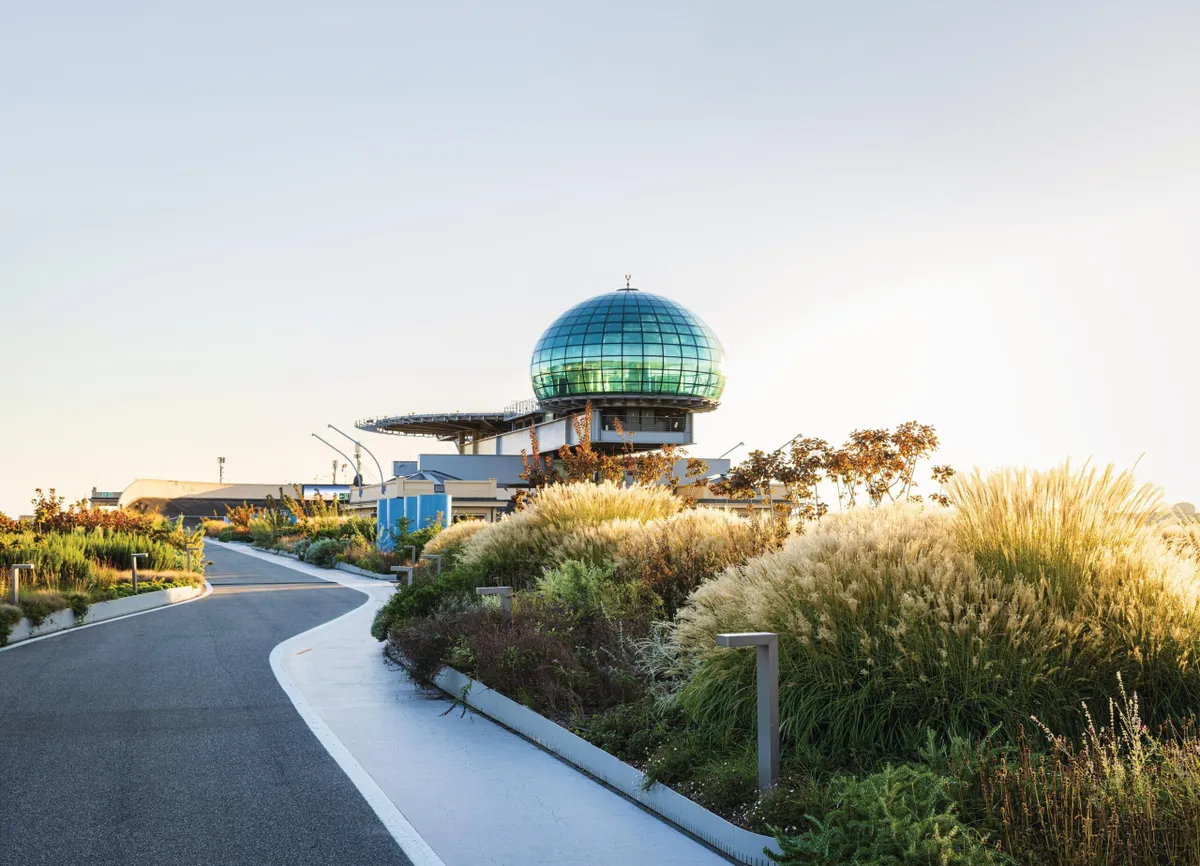
La Pista 500 is a rooftop with a test circuit still used by Fiat for trialling its new electric cars. Measuring 1.2km long, the track weaves its way through 28 different planting zones, and famously featured in
the 1969 film The Italian Job.

Clumps of Miscanthus sinensis ‘Gracillimus’ and Miscanthus sinensis ‘Yakushima Dwarf’ grow in shallow raised beds of 20-40cm deep. Architect Benedetto Camerana had to ensure the design would not damage the existing roof structure, which has a low weight-bearing capacity.
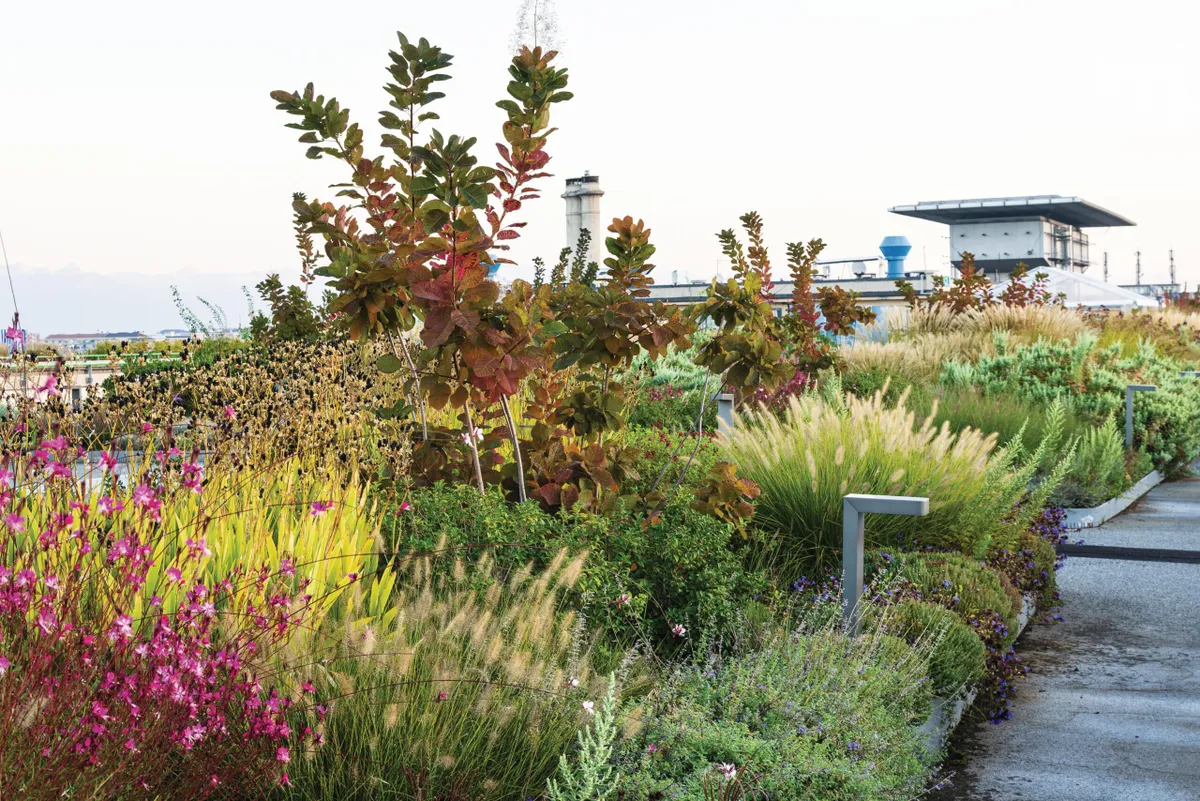
A row of reddish-leaved Cotinus ‘Grace’ provides late-summer colour above pink-bloomed Oenothera lindheimeri ‘Siskiyou Pink’, fluffy grass Pennisetum alopecuroides ‘Weserbergland’, low blue-flowered Ceratostigma plumbaginoides and evergreen mounds of Pittosporum tobira ‘Nanum’.

Renzo Piano’s design for the rooftop space includes the magnificent Pinacoteca Agnelli, a projecting steel art gallery with a glass roof, topped by a metal sunshade. Affectionately known as Lo Scrigno or The Casket, it houses 25 artworks, including masterpieces by Picasso, Renoir and Matisse, donated by the Agnelli family to the Pinacoteca Agnelli in 2002. The permanent collection is displayed alongside a programme of temporary exhibitions.
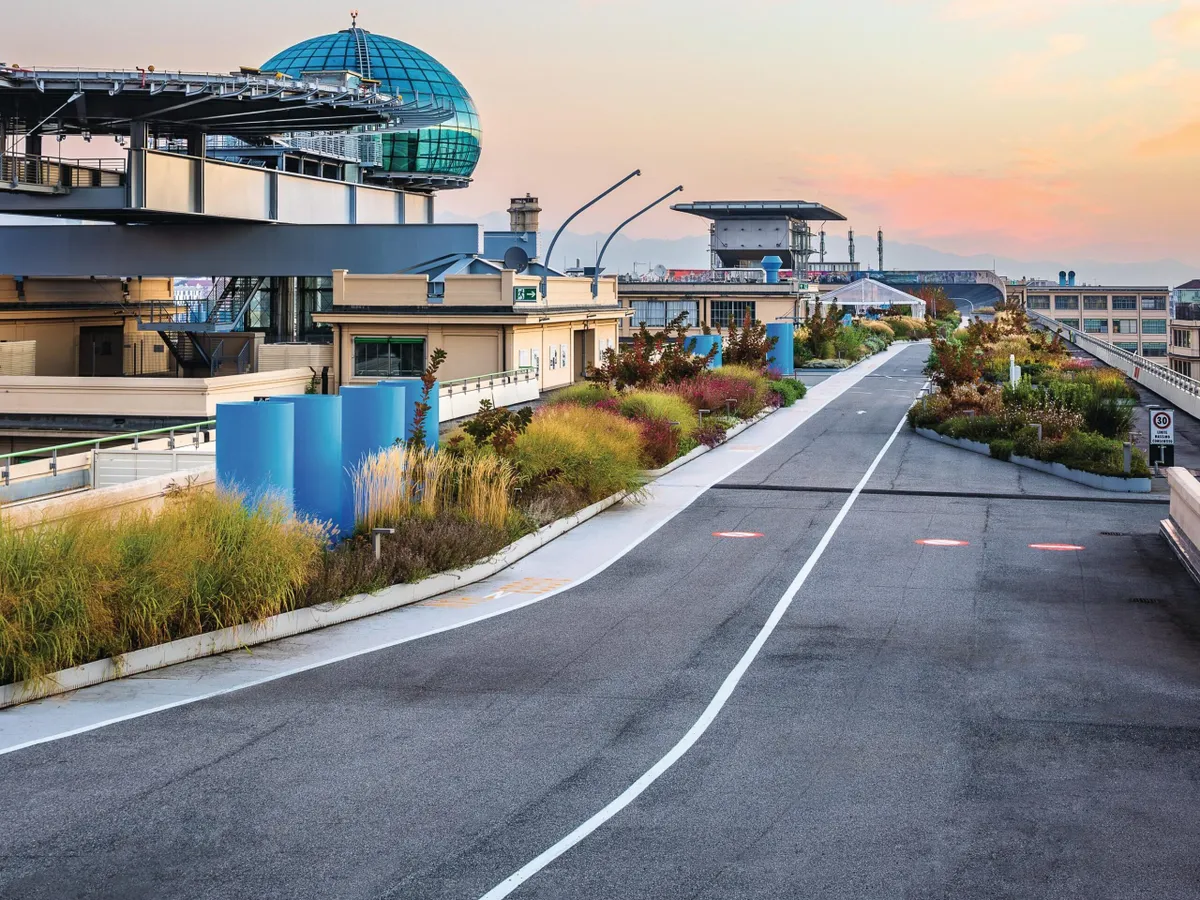
Large, blue painted pipes punctuate the planting beds around the roof, acting as reminders of the building’s industrial heritage, when it functioned as the Fiat car factory.
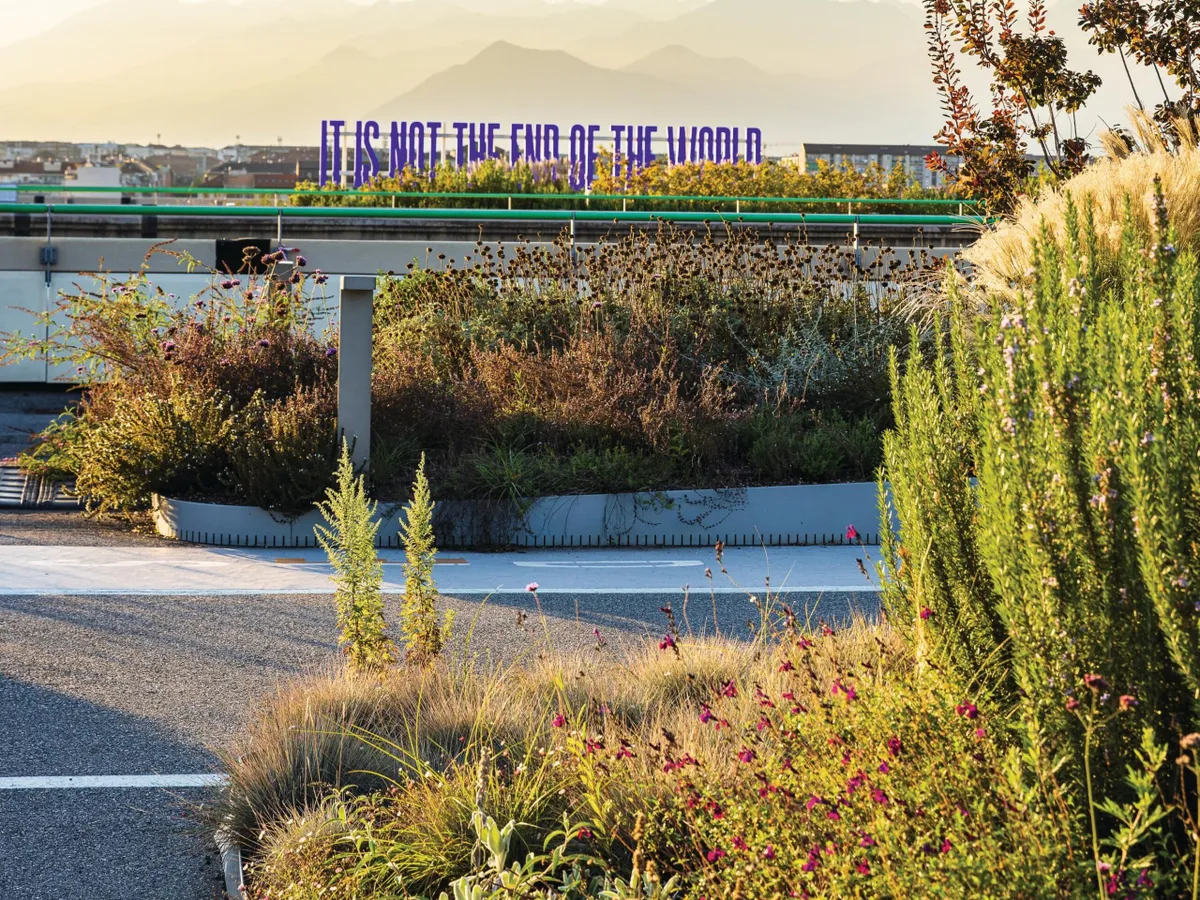
Created by the Danish group SUPERFLEX, It is not the end of the world is a 3m-high aluminium artwork, consisting of blue LED letters that rise out of the planting. Situated on the west wing of the track, it can be glimpsed from the city below.

On first entering La Pista 500, visitors encounter Die Doppelgängerin, a giant bronze sculpture by Austrian feminist artist Valie Export. Over 4m high, it consists of two pairs of intertwining scissors, evoking the female form and challenging traditional gender roles.
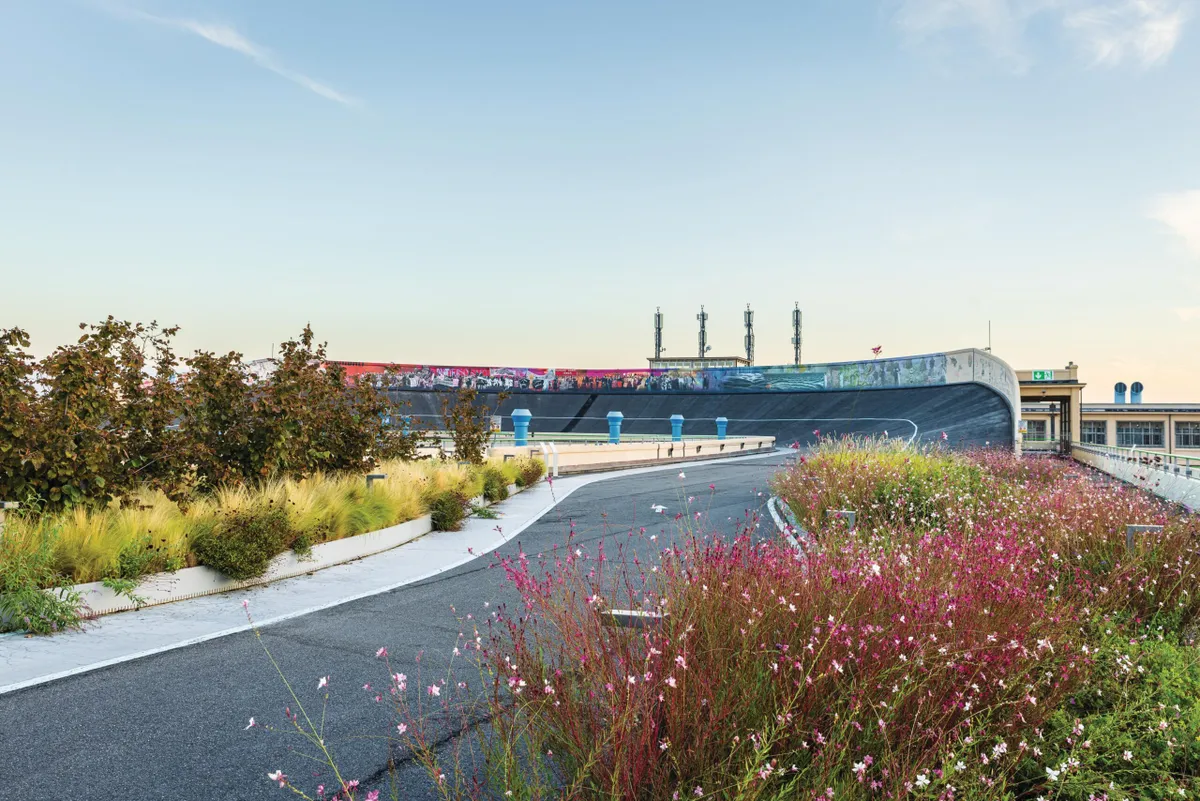
Purple-leaved hazels, Corylus maxima ‘Purpurea’ underplanted with Stipa tenuissima ‘Pony Tails’ and Cosmos atrosanguineus line one side of the track. Above the ramp at the northern end, the mural Pistarama by Dominique Gonzalez-Foerster features portraits of people who have contributed to the history of Turin.

The expansive rooftop garden is a popular destination for many people in Turin, to walk around the planting and enjoy the views of the city and the distant Alps.
USEFUL INFORMATION
Address Lingotto, via Nizza 230/103, Torino 10126, Italy. Open Tuesday – Sunday, 10am-5.30pm. pinacoteca-agnelli.it/en/pista-500